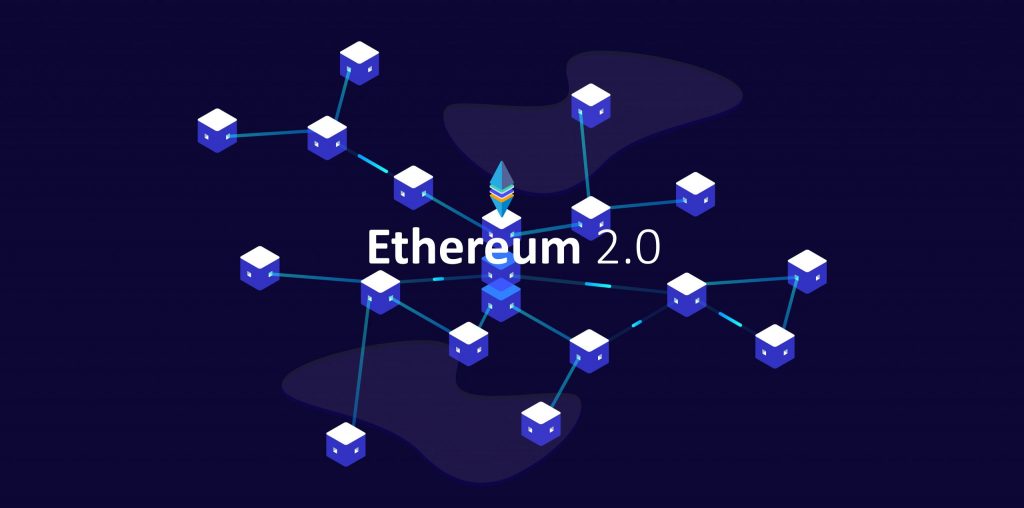
After the most crucial update to Ethereum with the recent London Hard Fork, the co-founder of Ethereum, Vitalik Buterin is confident about the Ethereum 2.0 transition. He said that EIP – 1559 (the fee reduction feature) has paved the path for the migration of Ethereum to Proof of Stake (ETH 2.0).
So, let’s understand what Ethereum 2.0 is and why it will be a watershed moment for the crypto industry.
What is Ethereum 2.0?
Ethereum 2.0, also called Eth2 or ‘Serenity’, is the next upgrade to the Ethereum blockchain. Since 2020, Ethereum 2.0 has been releasing in multiple phases starting at “Phase 0”. Each phase will improve the performance and functionality of Ethereum in different ways. There are two primary improvements introduced by Ethereum 2.0 that do not exist in Ethereum 1.0 – Proof of Stake and Shard Chains.
Currently, Ethereum 1.0 runs on a consensus mechanism known as Proof of Work (PoW). PoW relies on physical computing power (mining) and electricity (work) to build blocks on the blockchain. Proof of Stake (PoS) is an upgrade that enables improved security, scalability, and energy efficiency. Instead of relying on physical miners and electricity, PoS relies on validators (virtual miners) and Ether deposits. By eliminating mining which consumes a lot of electricity, Ethereum’s progressive decision to be environmentally conscious could attract the prior doubters to supporters of blockchain adaptation.
Merge
The process of changing PoW to ETH 2.0 is called the merge and is expected by early 2022 but could happen as early as end of 2021.
Shard Chains
Scheduled to launch in 2022, Shard Chains will be the third and final phase. Shard chains are a scalability mechanism that drastically improves the output of the Ethereum blockchain. Currently, having a single chain made up of consecutive blocks is incredibly secure and makes information easy to verify. However, requiring each full node to process and validate each transaction in consecutive blocks can affect the ability to process transactions quickly – especially in times of high mainnet activity. Shard chains are a mechanism through which the Ethereum blockchain is ‘split’ – thus dividing the data processing responsibility among many nodes. This allows for transactions to be processed in parallel rather than consecutively. Each shard chain is like adding another lane to upgrade Ethereum from a single lane road to a multiple lane highway. More lanes and parallel processing lead to much higher productivity.
How will PoS work on Ethereum 2.0?
Staking on Ethereum 2.0 will be simple. There will be a minimum threshold of 32 Ethereum required to participate in staking, and validators (stakers) will need to be running a validator node, this doesn’t need to be specialized machine and could be done on a consumer-grade computer or laptop. However, validators will be expected to be online consistently or face minor penalties.
The rate of return for staking ETH is expected to be around 4%–10%. A program called “slashing” will apply to any validator acting maliciously toward the network by taking a portion of the validator’s stake.
Benefits of Ethereum 2.0
Energy Efficient
Ethereum has historically operated a proof-of-work consensus. However, one reason for moving to proof-of-stake is that it’s generally considered to be far more energy-efficient than proof-of-work as mentioned above. Ultimately, Ethereum’s support for staking is expected to attract wider network participation compared to mining in the older version.